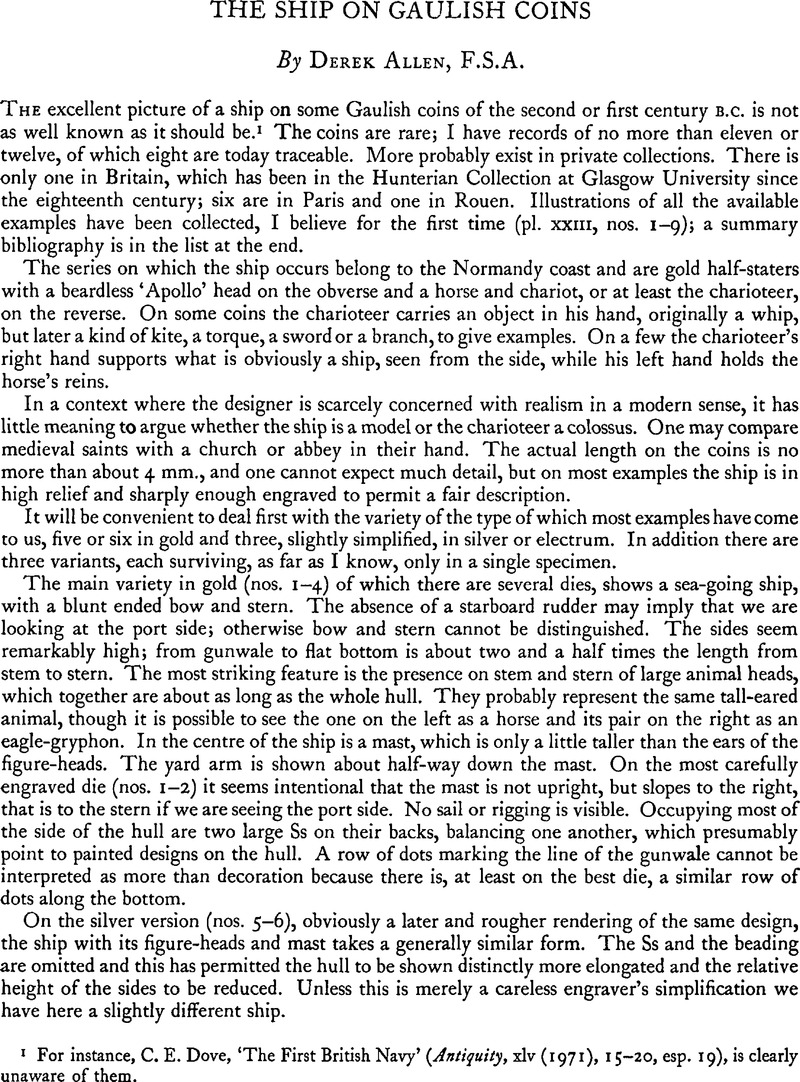Article contents
The Ship on Gaulish Coins
Published online by Cambridge University Press: 29 November 2011
Abstract

- Type
- Notes
- Information
- Copyright
- Copyright © The Society of Antiquaries of London 1971
References
page 96 note 1 For instance, Dove, C. E., ‘The First British Navy’ (Antiquity, XLV (1971), 15–20, esp. 19), is clearly unaware of them.CrossRefGoogle Scholar
page 97 note 1 Both Caesar (B.G. iii, 13) and Strabo (iv, 4, 1) describe the oak-built ships of the Veneti, with their broad bottoms, high stems and sterns, leather sails and chain rigging, designed for use in tidal waters.
page 98 note 1 The ship on the coins is essentially different from the form of rowed, mastless, prowless cargo-ship depicted on Roman monuments in Paris (e.g. the Palais des Thermes, see Duval, P.-M., Paris antique des origines au trioisieme siecle, 1961, 154–6Google Scholar; cf. also the stone in the Musée Carnavalet, 215, 219). Caesar records (B.G. v, 5, 2) that the ships for the second expedition to Britain were built by the Meldi, near neighbours of the Parisii at Lutetia (though Strabo, iv, 3, 5, places them next to the Lexovii) and the guild of nautae of Lutetia is recorded in an inscription as early as the reign of Tiberius; but I do not believe that the object depicted on a few of the coins of the Parisii below the head on the obverse (e.g. on B.N., Paris 7796) is the prow of a ship (as identified by Duval, P.-M., Proues de navires de Paris, Gallia V (1947) 141–2)Google Scholar; if it requires an objective interpretation at all, it could as well pass as a razor!
- 1
- Cited by


